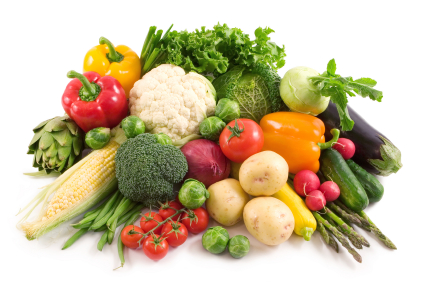Adding a bit more data to food system reformers’ arguments, a new study led by Germany’s prestigious Potsdam Institute for Climate Impact Research takes on the question of whether we can “feed the world” while preserving the planet come 2050. Short answer: Yes!
Researchers modeled various agricultural styles, growth patterns, and diets. Here’s what they say:
Despite pushes from agribusiness to intensify farming to feed a growing global population that is expected to reach over nine billion by 2050, the researchers found that a diet equivalent to eating meat three times a week would allow forests to remain untouched, animals to be farmed in free-range conditions, and greener farming methods to be used.
With as many people obese in the West as malnourished in poor countries — roughly a billion of each — distributing protein more fairly is also an opportunity to tackle global health problems, the report points out.
Oh, didn’t I mention that we’d have to eat a bit less meat? But at least there’s no need to go all Jonathan Safran Foer, so that’s something, right? There’s also one other slight adjustment we’d need to make. I won’t hold you in suspense for too long as to what it is. But believe me when I say that House Ag Chair Rep. Collin Peterson (D-Minn.) won’t like it at all:
[F]eeding the world in a planet-friendly way means there will be little room to grow bio-fuel crops for cars. Feeding people must come first.
People before cars? How un-American. Ah, well. Can’t win ’em all!
But seriously, this study made a real attempt to model all production styles and wasn’t simply focused on finding a way to make sustainable practices win. And even if skepticism remains, as it no doubt will, this study provides some solid evidence that the knee-jerk claim by so-called “realists” that sustainable practices simply can’t address the needs of a growing population is, well, flat out wrong. In fact, the study suggests that if there is an unrealistic side in this debate, it’s not the reformers’. Expecting the world to adopt to high meat-consumption patterns of Western countries appears to be impractical at best:
Global adoption of the ‘western high meat’ diet is only probably feasible with massive land use change. This would mean that an additional three million km2 of land would be needed for agricultural production, expanding into grazing land, with potential for serious detrimental environmental consequences. It would rely on a highly optimistic 54 percent increase in crop yields in line with the highest possible FAO forecasts. This approach would also rely on confining the vast majority of farm animals in inhumane intensive production systems.
What’s most useful about this study is that it throws down some markers. Sure, we can try to push our current unsustainable system full-bore until 2050. But we really will use up the planet and probably fail in the attempt. It’s worth asking yourself: Is steak a mere three times a week and an electric car in your garage really too high a price to pay for a sustainable future for everyone?


